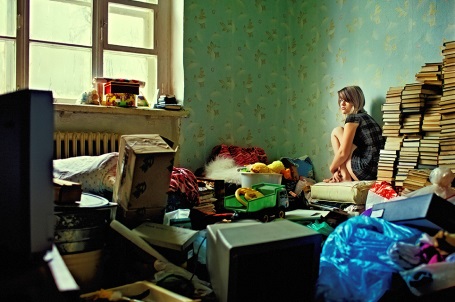|
Hoarding Recognized

|
A frequently cited definition of hoarding is provided by the Mayo Clinic. “Hoarding disorder is a persistent difficulty discarding or parting with possessions because of a perceived need to save them. A person with hoarding disorder experiences distress at the thought of getting rid of the items. Excessive accumulation of items, regardless of actual value, occurs.”
As with other behavioral disorders, there is a spectrum from mild to severe, which may seriously affect activities of daily living (ADLs) and provide dangerous environments. People with hoarding disorder may not recognize the problem because they lack awareness of it. Hoarding tendencies often start in the early teens and deepen with age and being more common in older adults. According to the American Psychiatric Association (APA), hoarding disorders occurs in 2-5% of the population. The APA also notes that many people with hoarding disorder also experience other psychological disorders, including depression, anxiety disorders, attention deficit/hyperactivity disorder, or alcohol use disorder Brain injuries can be a risk factor.
Hoarding can be contrasted with “collecting”, which includes organization of specific items, perhaps restored, cataloged, and displayed.
Common signs:
- Countertops and virtually any horizontal surface may be stacked with things.
- An emotional attachment to possessions regardless of value, including discomfort and lending to others or even allowing to touch items. The very idea of letting something go causes distress.
- Acquiring unneeded or seemingly useless items including saving sugar packets and napkins at restaurants or through dumpster diving and “curb-alerts”.
- Other difficulties making decisions, procrastinating (delaying action). This can be seen in “sorting” – moving things from one pile to another without actually discarding anything.
- This lack of organization can lead to important items getting buried in the clutter, including things like essential utility bills for heat/cooling, electricity and water.
Hoarding disorder can cause a variety of complications, including:
-
Unsanitary, unhealthy living conditions
-
Risk of tripping and falls
-
Injury or being trapped by shifting or falling items
-
A fire hazard, both as a source of fire and blocking exits
-
An inability to perform daily tasks, such as bathing or cooking
-
Poor work performance due to the behaviors
-
Family conflicts, loneliness and social isolation
-
Financial problems and legal issues, including eviction
It is unlikely that this problem with “go away”. It typically deepens with age. If you or someone you know is experiencing these signs, it is probably time to contact the doctor or a mental health professional. The local city or county social services agency may also be helpful in providing information and referral to a source of help.
Copyright 2018-2021, AGIS Network, Inc.